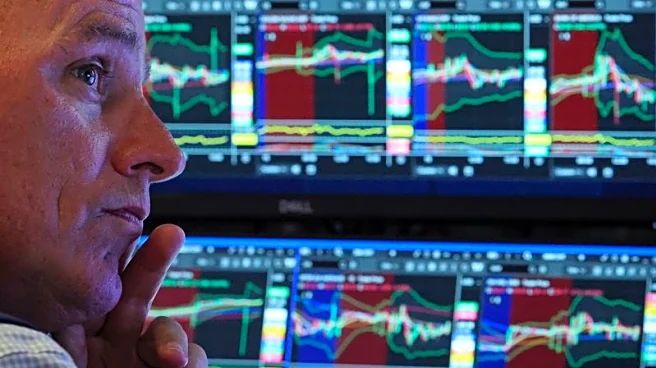What is the story about?
What's Happening?
Hedge funds have significantly increased their purchases of financial stocks following the Federal Reserve's first rate cut of 2025. According to data from Goldman Sachs' prime brokerage, financial stocks were the second-most bought global sector, trailing only tech stocks. The buying activity was driven by new long positions rather than short covering, marking the fastest clip in three months. Nearly all financial subsectors saw increased interest, particularly banks, insurers, and consumer finance firms, while mortgage REITs experienced outflows. The Federal Reserve's rate cut, which was widely anticipated, has led to a steepening of the yield curve, benefiting banks by improving lending profitability. Additionally, lower borrowing costs are expected to boost loan demand and economic activity, benefiting financial companies involved in capital markets.
Why It's Important?
The Federal Reserve's decision to cut interest rates is significant for the financial sector, as it can enhance profitability for banks and stimulate economic activity. A steeper yield curve allows banks to borrow short-term and lend long-term more profitably, potentially increasing their earnings. Furthermore, lower borrowing costs can lead to increased loan demand, benefiting financial firms involved in capital markets through heightened deal-making and credit growth. This development is crucial for stakeholders in the financial industry, including investors and companies, as it may lead to increased stock valuations and improved economic conditions.
What's Next?
The Federal Reserve has signaled the possibility of two more rate cuts before the end of the year, which could further impact the financial sector. Stakeholders, including hedge funds and financial companies, are likely to continue monitoring these developments closely. If additional rate cuts occur, they may lead to further increases in financial stock purchases and potentially more favorable conditions for banks and other financial institutions. The broader economic implications of these rate cuts will also be watched by policymakers and investors.
AI Generated Content
Do you find this article useful?














